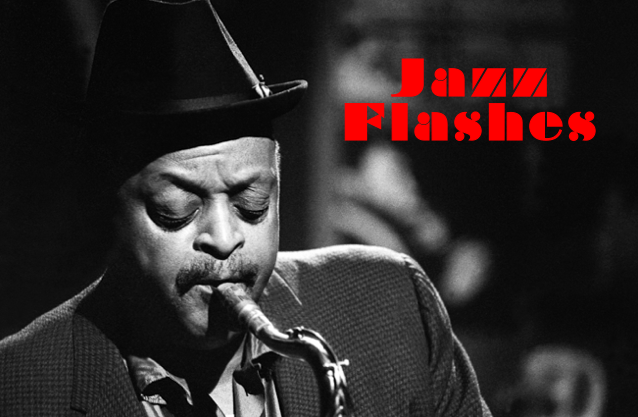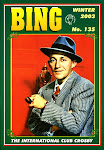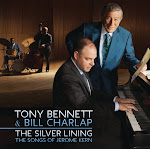Reading the excellent book Popular American Recording Pioneers
, by Tim Gracyk and Frank Hoffmann, I recently found an allusion to a series of articles entitled "Famous Bandmasters in Brief," originally published in the magazine Jacobs' Orchestra Monthly
in the 1910s. This gave me the idea for a new series of posts for The Vintage Bandstand
, which I will call "Lesser-Known Bandleaders in Brief," and which will offer short portraits of bandleaders who either are not as well known today as they were in their heyday, or who were never able to achieve great popularity in the first place. This new series begins with an article devoted to Dick Stabile, an accomplished saxophonist who is best remembered for his work as arranger and musical director for Dean Martin and Jerry Lewis but who made some very interesting recordings with his own band that are rather obscure today.
Born in Newark, New Jersey, on May 29, 1909, into a musical family,
Dick Stabile was a fine alto saxophonist who had been around for quite a while by the time the Swing Era officially began. He had learned to play the saxophone as a teenager, and his first serious job had been with
Ben Bernie's orchestra, but by the mid-1930s, he was already fronting his own band and making records for the Panachord and Decca labels, his band featuring vocalist
Gracie Barrie, who would soon become his first wife. In his book
The Big Bands, critic
George T. Simon describes Stabile as "a handsome, smiling, gentle sort of Lothario" and praises "his amazing technique" (479), although he criticizes his ability to play real jazz, which actually sounds like too severe a judgment in the face of the excellent recordings that the Stabile band made between the 1930s and the 1950s.
During World War II, Stabile joined the Coast Guard, and so his wife led the orchestra until his return to civilian life, when he reorganized the band and resumed touring. A January 1947
Billboard review of an appearance at the Aragon Ballroom in Ocean Park, California, during which Stabile shared the bandstand with the sweet band of
Art Kassel, mentions that the outfit is only four weeks old and refers to its style as a "would-be hybrid cross between
Boyd Raeburn and
Tommy Dorsey" (31), but the tone of the reviewer is rather dismissive and overtly critical of the band's sound. At this point,
George Siravo was among the arrangers working for the band, and his arrangements were complex and innovative, perhaps prompting the comparison with Raeburn's progressive approach to swing.
In 1949, while playing at Ciro's, in West Hollywood, Stabile met
Dean Martin and
Jerry Lewis and soon became their musical director, remaining close friends with both men until the end of his life. Stabile also wrote the charts for Dino's Capitol albums
Dean Martin Sings and
Swingin' Down Yonder (you can read more about these albums
here), as well as accompanying both Martin and Lewis on radio and television even after they broke up their act together (you can see Stabile playing "The Man I Love" on television with Martin and Lewis
here). The 1950s were successful years for Stabile, as he was involved with popular Martin hit recordings such as
"That's Amore" and
"Memories Are Made of This," but throughout the 1960s and '70s he concentrated on leading orchestras at various hotels in California, his last notable job being as leader of the band at the Roosevelt Hotel in New Orleans, where he passed away on September 18, 1980, following a heart attack.
The only CD compilation of Stabile's work currently available is the very interesting British import
Many Faces (Montpellier Records, 2008), which includes material from sessions recorded in 1955 and 1957, with arrangements courtesy of
Russ Garcia. Though this is already rather late in Stabile's recording career, the orchestra has not lost any of its vigor, and it sounds crisp, clear, and engaging, powered by Stabile's highly polished saxophone technique. The 24 tracks on the CD justify its title, showing that Stabile was definitely a musician of many faces, tackling ballads and uptempo numbers with equal ease, sometimes indulging in his trademark runs ("Many Faces" is a fine instance of this) but also offering thoughtful solos of great beauty. While it is true that the Stabile band relies heavily on arrangements and leaves little room for improvisation, the jazz content of many of Garcia's charts is undeniable (listen to
"Just You, Just Me" or "Tenderly" if you are looking for two examples) and some of the tracks even find Stabile experimenting with Latin rhythms ("Hong Kong Cha Cha") and melodies out of the classical tradition (
"Ballet Bleu"). This is the perfect—and, at the time of this writing, alas, the only—place to get a proper introduction to the very exciting and often surprising sound of Dick Stabile, and it is well worth giving it a try.
 |
| Dick Stabile on stage with his wife, Gracie Barrie (Photo: William Gottlieb) |



































